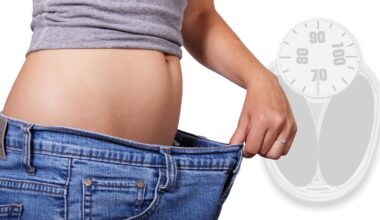Biomechanical Factors Affecting Injury Prevention in Athletes
In the field of sports performance, biomechanics plays a crucial role in understanding how athletes can prevent injuries. Injury prevention strategies must be rooted in a solid understanding of biomechanics, which involves studying the forces acting on the body during physical activity. By analyzing kinetic and kinematic variables, coaches and trainers can develop tailored conditioning programs that emphasize safe movement patterns. Various biomechanical factors, such as limb alignment, joint angles, and muscular activation, can significantly impact an athlete’s likelihood of injury. For instance, improper alignment during running can lead to conditions like runner’s knee. Thus, athletes must be educated on proper techniques to mitigate these risks. Biomechanics also helps identify specific strengths and weaknesses in an athlete’s movement mechanics. This assessment can result in customized training protocols that enhance performance while minimizing the risk of injury. Additionally, integrating technology in biomechanics allows for real-time feedback and improved technique adjustments. As a result, athletes can optimize their performance while safeguarding against the potential for injury.
Effective biomechanics training should focus on strength, flexibility, and endurance. A strong foundation in these areas can improve overall resilience, enabling athletes to handle the demands of their sport. Notably, strength training enhances muscular support around joints, providing them with better stability during dynamic actions. Moreover, flexibility training ensures that muscles can lengthen adequately to accommodate various movements without tearing or straining. Endurance training contributes not only to performance levels but also to injury prevention by promoting efficient energy usage, reducing fatigue-related injuries. One crucial aspect is the assessment of an athlete’s movement patterns, identified through specialized testing equipment such as motion capture and force platforms. These assessments reveal how biomechanical factors influence injury risk. For instance, specific landing techniques during jump events may predispose athletes to ankle sprains. Therefore, constructing targeted training regimens based on these assessments provides significant benefits. Tailored strength programs can reduce these risk factors while enhancing athletes’ readiness for competition. In summary, understanding biomechanics is essential for developing safe and effective training practices that contribute to injury prevention in athletes.
Key Muscular Imbalances and Their Impacts
Muscular imbalances are often a precursor to injuries in athletes, and their identification is vital for effective injury prevention strategies. Imbalances can arise when certain muscles are stronger or more dominant than their opposing counterparts. For instance, an athlete with strong quadriceps but weaker hamstrings may be at increased risk for knee injuries due to insufficient support during dynamic movements. A crucial aspect to consider is the relationship between primary movers and stabilizers in joint function. When primary movers become overactive, stabilizers can fail to provide adequate support, increasing the likelihood of injury. Addressing these imbalances requires comprehensive assessments, including strength testing and functional movement screening. These assessments identify problematic areas, allowing for focused rehabilitation and conditioning efforts. By strengthening weaker muscle groups through tailored resistance training, athletes can re-establish balance and improve overall joint stability. Additionally, proactive measures can create efficient movement patterns, reducing excessive stress on the musculoskeletal system during athletic performance. Thus, monitoring and adjusting muscular balances is imperative to ensure health and success in sports participation.
Biomechanics also emphasizes the coordination of movement among various body segments. Optimal coordination reduces excessive forces on joints and tissues, contributing to a lower risk for injuries. An effective training regimen addresses the timing and sequencing of muscle activations, ensuring various segments move synergistically. For example, proper trunk stabilization can influence lower limb mechanics during sprinting or jumping tasks. When the core is weak, compensatory strategies and further imbalances may occur in the lower body, leading to increased strain and injury potential. Practicing sport-specific drills that promote whole-body integration ensures all components work harmoniously, allowing for fluid and efficient movement. Furthermore, training methodologies such as plyometrics enhance reactive strength and develop neuromuscular control, improving the athlete’s ability to absorb and respond to external forces. This control is particularly crucial during high-intensity sports, where split-second decisions can make a significant difference. Overall, focusing on biomechanical principles allows athletes to achieve peak performance while decreasing the likelihood of injuries that can disrupt their training and competitive endeavors.
The Role of Equipment in Injury Prevention
Equipment plays a significant role in supporting biomechanics and injury prevention for athletes. Proper footwear, for instance, can enhance performance while minimizing risks associated with various sports. Shoes designed with appropriate cushioning and support can significantly reduce impact forces during running or jumping, decreasing the risk of injuries such as plantar fasciitis or shin splints. Furthermore, advancements in technology have led to the creation of specialized equipment tailored to mitigate specific biomechanical stressors. For example, braces and orthotics can provide extra support to stressed joints and improve alignment, addressing potential injury risk factors. Additionally, utilizing protective gear, like helmets and pads, can safeguard athletes against acute injuries in contact sports. Wearing gear that meets specific sport demands ensures better biomechanics, promoting safer practices. Additionally, coaches and trainers should regularly assess the athletes’ equipment as it can significantly influence performance and risk factors. Educating athletes on selecting suitable gear based on their competence and biomechanics aids in reducing injury likelihood, thus enhancing their training experience.
Another factor to consider is environmental influences on biomechanics during athletic performance. Surface types and conditions substantially affect biomechanical responses in sports. For instance, athletes competing on hard surfaces face different impacts compared to those on soft, yielding surfaces. Research indicates that soft surfaces can reduce forces experienced during high-impact activities, thereby decreasing injury rates. On the contrary, highly rigid surfaces may increase the likelihood of conditions such as stress fractures or tendon injuries due to the excessive strain on the body. Awareness of these factors is crucial for athletes when deciding where to train or compete. Implementing strategies to adapt to varying conditions, such as proper warm-up routines and recovery techniques, can ameliorate some risks associated with unfavorable surfaces. Additionally, considering the incorporation of sport-specific training on different surfaces promotes athlete acclimatization, better equipping them for competition. However, it is equally important that athletes have access to diverse training environments to cultivate a robust biomechanical foundation that supports overall performance and minimizes injury.
Conclusion and Future Directions in Biomechanics
In conclusion, examining the biomechanical factors affecting injury prevention in athletes is vital for enhancing performance and well-being. As advancements in sports science continue, leveraging data analytics can optimize training regimens based on individualized biomechanical evaluations. These insights enable athletes to understand their movement patterns, strengths, and weaknesses better, allowing for personal progress tracking. Furthermore, integrating technologies such as wearable sensors offers real-time feedback on biomechanical parameters during training and competition. Such technology enhances the monitoring of stress on the body and aids in injury prevention efforts. Multidisciplinary approaches involving biomechanics can lead to improved athlete education regarding proper movement techniques and strategies for injury prevention. Exploring biomechanics in various sports disciplines also provides valuable insights into sport-specific injury mechanisms and prevention strategies. Fostering collaboration among sports scientists, coaches, and medical professionals can ensure a comprehensive approach towards athlete health and performance optimization. The future of injury prevention in sports lies in understanding the interconnectedness of biomechanics and athletic training, offering promising pathways for creating safer sporting environments.


